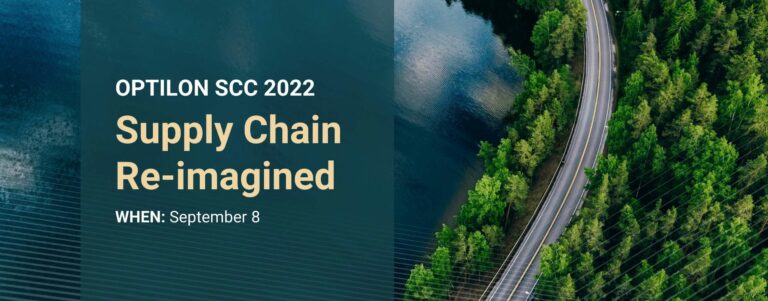Finding it hard to balance profit and planet in your supply chain?
You’re not alone. Growing environmental threats and their impact on communities have pushed sustainability to the top of the agenda. Today, customers, investors, and regulators expect more. A sustainable supply chain isn’t a “nice to have” anymore – it’s a must-have.
Build a supply chain that's both sustainable and competitive.
With smart IT solutions, you can stay ahead of rising compliance demands while still optimizing cost and service. It’s about gaining transparency across financial, social, and environmental performance – and having a clear roadmap to reduce risks and drive continuous improvement. A sustainable supply chain doesn’t just meet your responsibilities – it sets you apart.
Boost competitiveness through more sustainable supply chains.
Stay ahead by integrating network design and operational efficiency with sustainability improvements and compliance readiness.
- Know where you stand: Assess your supply chain setup – network design, efficiency, and environmental impact – to establish a clear baseline.
- Explore better options: Simulate scenarios to optimize costs, reduce risks, and improve performance – both operationally and environmentally.
- Build for resilience: Set bold sustainability goals and take action that strengthens your business and reduces environmental impact.
- Lead with purpose: Show customers, partners, and investors that you’re serious about sustainability – beyond just decarbonization.
- Stay ahead of regulations: Link your data directly to global sustainability reporting standards – mandatory and voluntary.
Key Features & Benefits
Supply network and operations optimization: Less waste, lower costs, better performance.
Designing and running a more efficient supply chain helps reduce material use – especially virgin resources – and cuts energy consumption, particularly from non-renewables. It also drives down costs and lead times across sourcing, production, storage, and transport – while shrinking waste and emissions (including CO₂).
You can make this happen through smarter network design, process optimization, tighter internal-external integration, and better visibility. IT tools bring it all together, helping you turn strategy into impact.
What-if scenario management: Model better outcomes, meet regulations.
Modern IT tools make it easy to manage complex data, test multiple scenarios, and navigate constraints. In a fast-moving world, risks, opportunities, and regulatory changes become variables you can plan for – not react to.
Scenario modeling lets you visualize the impact of different strategies, prioritize improvements, and support responsible reporting. It’s essential for compliance frameworks like CSRD and GRI and helps you clearly track your environmental footprint across materials, energy, waste, and emissions.
Up to 80% of a company’s emissions come from the supply chain.
Material and product production drives 45% of global GHG emissions.
58% of companies use one or more sustainability practices.
Explore the latest in Decarbonize the Supply Chain with planning and optimization technologies
Stay ahead in supply chain with expert insights and practical tips. Our articles, crafted by industry pros, keep you informed and empowered.

Recap: The Optilon SCC 2022
Welcome to a Recap of The Optilon Supply Chain conference 2022, held on September 8, 2021. Disruptions come in many

The Nordic State of Supply Chain Sustainability 2022
Reducing Emissions in the Supply Chain is Crucial to Tackle Climate Change Climate change is the biggest challenge of our

Developing your Supply Chain Sustainable Leadership
This year Earth Overshoot Day will be (or was) July 28th. Every day after, we’re stealing from future generations. 156
Talk to a supply chain expert!
Ready to take your supply chain to the next level? Let’s talk. Our experts are here to help you find the right solutions for smoother, smarter operations.
